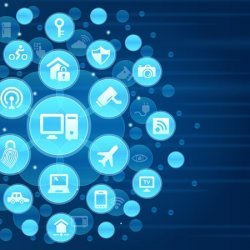The Importance of Optimizing User Experiences for Internet of Things and Cloud Applications
Joe rises early as he has a busy day ahead of him. The first thing he does is reach for the smart baby monitor on his nightstand. The visual feed tells him that his 3-month-old daughter is still sleeping soundly,and the temperature display for the nursery lets him know that the baby is neither too hot nor too cold.
Having recently launched a fitness program, Joe stops by the bathroom and steps on his smart scale. It displays his current weight, but it also sends tracking information about his weight, body fat index and body fat percentage to an online graph that he can access whenever he wants. Since he plans to go jogging after the babysitter arrives, he checks the outdoor air quality at the freestanding monitor that receives and displays the data transmitted by sensors placed outside his home.
Checking his email, Joe reads a message from his employer informing him that she has gone out of town to meet with a client. To facilitate collaboration with the client’s overseas manager, she would like Joe to upload a project on which he has been working.
The sitter arrives, so Joe straps on his fitness monitor and goes for his run. His device will monitor his pulse, respiration and heart rate as well as track his distance and time; all information will be uploaded to the cloud.
Returning home, Joe decides to take his daughter along when he goes to the mall. He gives the sitter the rest of the day off, and Joe and his baby drive to the mall. On the way, Joe’s car notifies him that it is nearing an oil change. Upon arriving at the mall, Joe finds he cannot remember whether he locked the front door, armed the security system and adjusted the thermostat, so he uses his smartphone to verify that his home is secure.
Joe has already interacted with the Internet of Things and various cloud applications — and it is not even time for lunch yet. The rest of his day will see him embracing a more extensive range of applications that can help him be more efficient at his job, protect his family and generally make his life easier.
Now imagine how Joe will feel if one of his apps had failed to launch or had taken an inordinate amount of time to respond. He could have felt frustrated or stressed, or he might have even have been distracted by uncertainty or anxiety. Whatever his reaction, however, he would not have been likely to think good thoughts about the app’s provider. It would make little difference to Joe whether the app failed because of network issues or poor code design.
As people become increasingly reliant on the Internet of Things and cloud computing, it becomes even more important to ensure that applications work as intended. There are many factors that can affect an app’s performance, including service priority, latency and bandwidth. If an app is going to fail, developers need to know about the failure before deployment — not when users post negative comments about it on their social media pages.
The best way to ensure the performance of your application is through IoT application testing and cloud application testing. Before you deploy an app, you should know how it will perform in a variety of situations. You need to emulate “real-world” conditions so that you can subject your application to the types of usage, limitations and restrictions to which it will be subjected — or potentially could be subjected — after deployment. After all, an app that fails during testing does not carry the risk of creating ill will among your end users.

